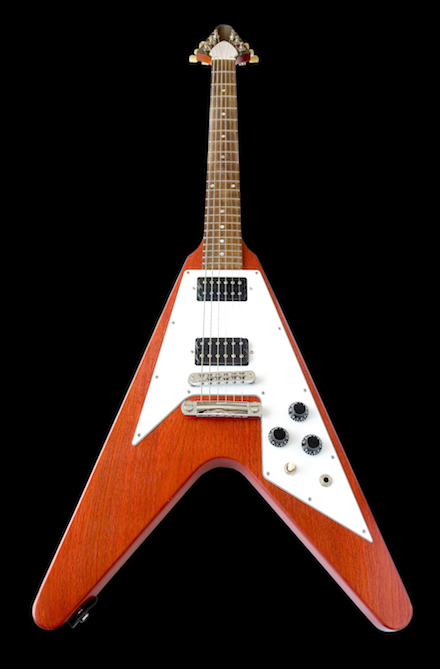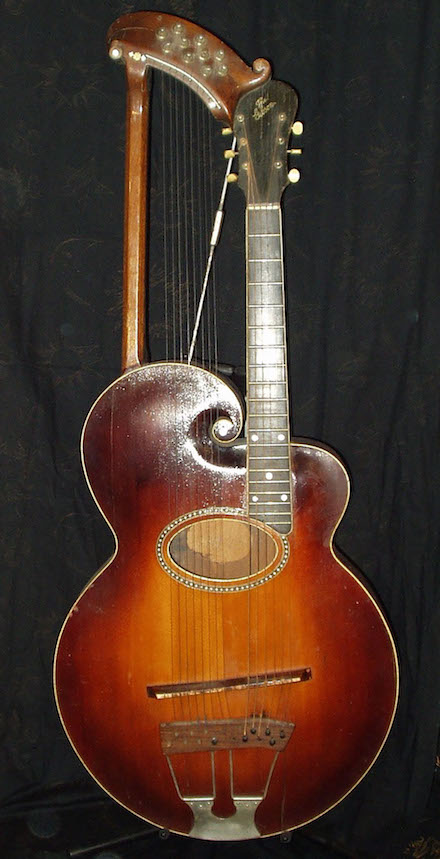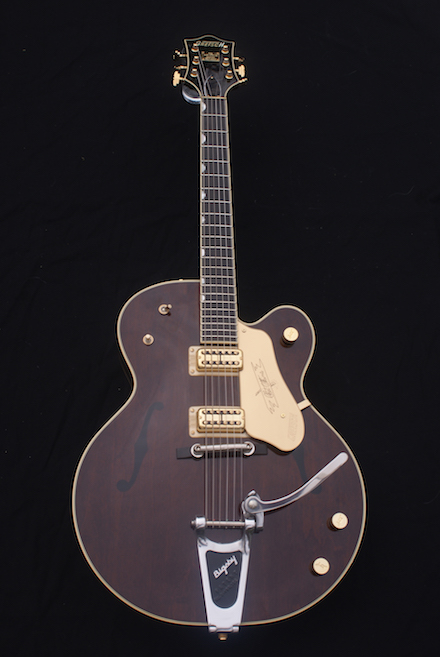(PITTSFIELD, Mass.) – GUITAR: The Instrument That Rocked the World, a fully immersive exhibition exploring all aspects of one of the most enduring musical icons of the last 200 years, opens at the Berkshire Museum on Saturday, May 20, and will be on view through Monday, September 4.
A debut party for GUITAR: The Instrument That Rocked the World will be held Friday, May 19, from 5:30 to 7:30 p.m. Live music will be provided by the Berkshire Jazz Collective featuring Andy Wrba, plus food, complimentary wine, beer, and signature cocktail, and other surprises.
Strummed or picked, acoustic or electric, playing a hard rock anthem or gentle folk tune, the guitar is the most popular instrument in the world. Visitors to GUITAR: The Instrument That Rocked the World will experience the instrument, from its history, evolution, and design to the music it has created and the technology that continues to enhance it.
The exhibition covers the science, sound, and cultural impact of the guitar in a family-friendly installation that contains more than 70 instruments, from the rare and antique to the popular and innovative, as well as performance videos, audio stations, hands-on interactives, models, touchscreens, and photographs.
The exhibit includes the world’s largest guitar, 43.5 feet long and 16 feet wide, certified by Guinness World Records, and playable by visitors. This amazing instrument is a scale model of the Gibson Flying V, at 12 times its normal size. It was originally built by students at the Academy of Science and Technology in Houston to learn about electromagnetism, engineering, waveform generation, and acoustics. The guitar weighs 2,000 pounds and uses airline cable for strings.
“We are thrilled to offer this exciting exhibition at the Berkshire Museum,” says Van Shields, executive director of the Berkshire Museum. “In our community, where interest and appreciation for music of all kinds is so significant, offering children and families the chance to learn about the science, history, and artistry of the guitar is a beautiful fit for our mission.”
The exhibition features examples of the oud, sitar, and lute, European and Asian instruments from the Middle Ages that were precursors of the guitar, displayed next to the guitar as we know it today, with its signature hourglass shape. Turn-of-the-century guitars are displayed in their historical context, as are examples of instruments that show the work of acclaimed nineteenth-century craftsmen C.F. Martin and Orville Gibson.
The exhibit includes wood and string samples, from maple to catgut, that give each guitar a distinctive sound. An acoustic guitar is cut open to reveal the intricate woodwork required to create the sturdy sound box. Over the years, guitar makers have experimented with hundreds of shapes in their search for the perfect combination of beauty, physics, and sound. Visitors will learn how European luthiers who emigrated to the United States changed the structure of the guitar to make it louder and stronger.
Interactive stations show how strings resonate on wood, as well as the stress the wood is under. Strings alone don’t make much noise; the soundboard of an acoustic guitar, not the body, enhances the strings’ vibrations to create volume. Visitors can challenge their memory by playing riffs on a virtual fretboard that tests the ability to remember complex patterns.
When band members couldn’t hear guitars above drums and horns, technicians, luthiers, and musicians looked for new ways of increasing the volume. Electricity was first used in the 1930s to amplify guitars, and visitors to the GUITAR exhibit will see how magnetic coils capture the vibration of the strings and turn it into amplified sound, making an electric guitar one of the loudest devices ever created.
By the 1950s, wide-scale production of electric guitars had started and it continues to this day. Inventors and designers like George Beauchamp, Leo Fender, Les Paul, Ted McCarty, and Paul Bigsby came up with innovative body shapes. GUITAR visitors will see these guitars — Rickenbackers, Fenders, Gibsons, and more — and understand how the electric guitar lead to the creation of entirely new styles of music.
With advances in electric guitars there arose a need for equipment to support them, especially amplification and sound modification gear. Visitors will see an amplifier stack, 6-feet tall and capable of producing sound over 120 decibels, and experience what gives modern music so much volume. Exploring the physics of amplifiers (the creation of a signal, the electrical generation of sound, the movement of speaker cones) will expose visitors to the ways in which sound can be modified to produce music.
A full schedule of special programs and musical performances is planned to accompany the exhibition GUITAR: The Instrument That Rocked the World.
About the Berkshire Museum
Located in downtown Pittsfield, Massachusetts, at 39 South St., the Berkshire Museum, a Smithsonian Affiliate, is open from 10 a.m. to 5 p.m. Monday through Saturday, and noon to 5 p.m. on Sunday.
Special seasonal pricing will be in place during the run of GUITAR: The Instrument That Rocked the World: from May 20 through September 4, admission will be $16 adult, $8 child; Museum members and children age 3 and under enjoy free admission. For more information, visit Berkshire Museum or call 413.443.7171.
In association with the Smithsonian since 2013, Berkshire Museum is part of a select group of museums, cultural, educational, and arts organizations that share the Smithsonian’s resources with the nation.
The Berkshire Museum integrates science, history, and the arts in dynamic educational and engaging programs and exhibitions for visitors of all ages. Curiosity Incubator is on view. Tell Me More … Time and Travel, Extreme Exploration, and Art of the Armament is on view through April 30, 2017. The Science of Color is on view through April 30, 2017. Little Cinema is open year-round. Lab102, Feigenbaum Hall of Innovation, Worlds in Miniature, Aquarium, and other exhibits are ongoing.



